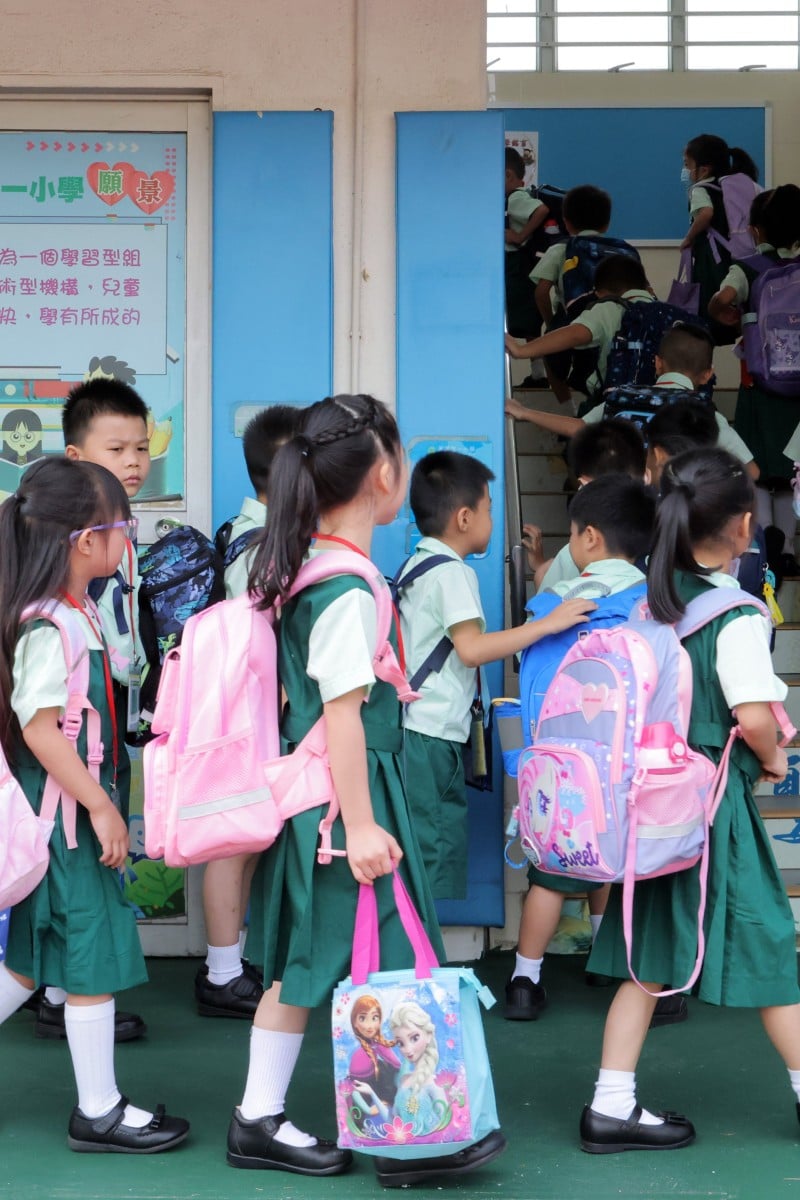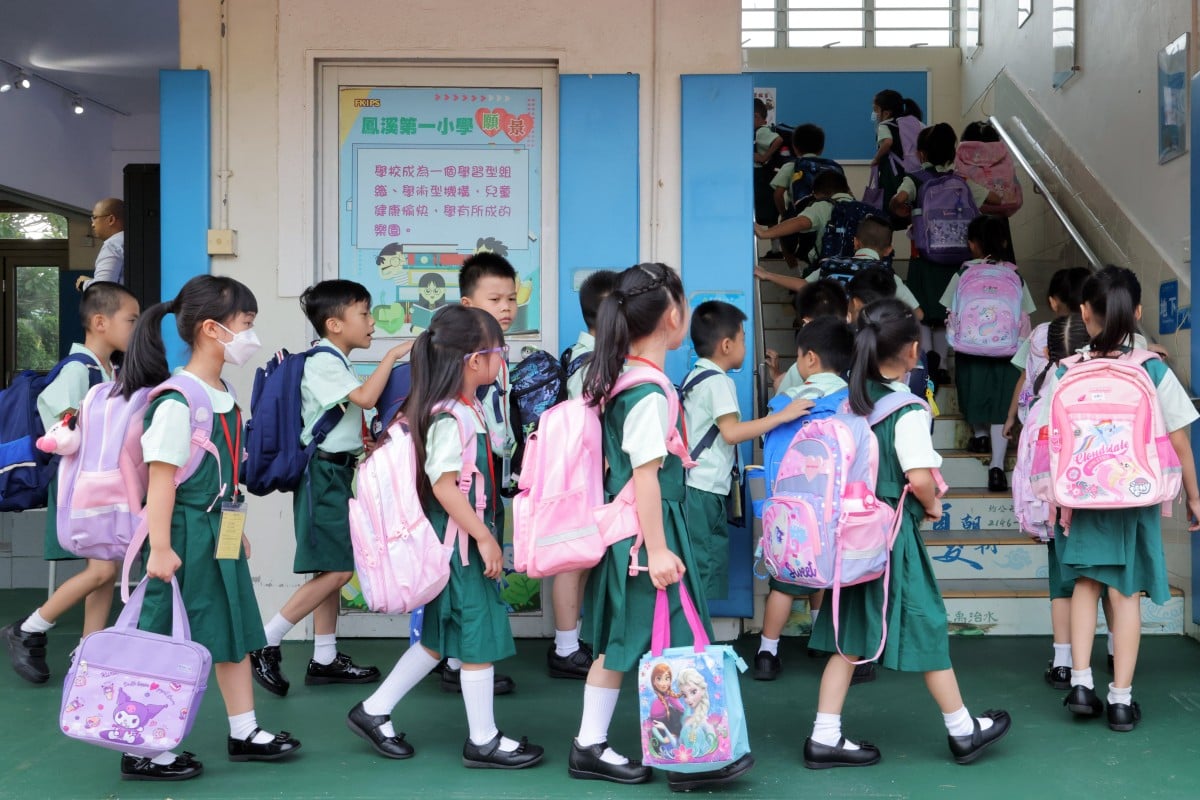
- Sector called the prediction, gloomier than the one from 2023, ‘shocking’ and is seeking a lower headcount threshold to operate a class
- City’s declining birth rate to hit Yau Tsim Mong and Tsuen Wan hardest; all four districts on Hong Kong Island to see loss of 40 to 60% of six-year-olds
 Hong Kong is bracing itself for a 36% drop in Primary One enrolments over the next six years. Photo: Jelly Tse
Hong Kong is bracing itself for a 36% drop in Primary One enrolments over the next six years. Photo: Jelly TseThe Primary One student population in Hong Kong is expected to fall 36 per cent over the next six years, as per the latest data provided by education authorities. This figure is even more downcast than the one made in 2023.
The primary school sector on Thursday described the latest prediction, down by 37 per cent over last year’s, as “very shocking” and urged the government to lower the headcount threshold for operating a single class from 23 to 20 pupils amid the shrinking student population to avoid further school closures.
According to the latest projections released by the Education Bureau on Thursday, the number of six-year-olds expected to start Primary One will drop from 49,600 this year to 31,500 in 2029, a 36 per cent decline.
More mainland Chinese pupils ‘not an option’ for Hong Kong public schools, says education chief
The bureau last year expected 50,000 six-year-old children to enrol in Primary One in 2029.
Most of the pupils in 2029 will be born in 2023, when Hong Kong recorded only 33,200 newborns, the second-lowest number on record.
The bureau’s statistics showed that Yau Tsim Mong and Tsuen Wan would be hit the hardest as the number of children enrolling in Primary One in the two areas would shrink by 70 per cent in six years. About 2,000 pupils are projected to sign up for Primary One in Yau Tsim Mong this year, but the figure would drop sharply to only 600 in 2029.
All four districts in Hong Kong Island were also projected to suffer a loss of about 40 to 60 per cent of six-year-olds.
The Education Bureau predicted that the number of 12-year-olds who would start Form One would fall from 68,300 this year to 54,300 in 2029, a 20 per cent drop. The latest prediction was more pessimistic than that of last year, when the government expected there would still be 60,100 students entering secondary schools in 2029.
Kowloon’s Yau Tsim Mong along with four districts in Hong Kong Island and Sha Tin will bear the brunt of the falling number of students who are expected to study Secondary One in 2029.
How can Hong Kong boost its record-low birth rate?
The government said the estimates were compiled with reference to the 2021-based projections released by the Census and Statistics Department last August and the ones released by the Planning Department for 2023 to 2031 last month.
Despite the expected crash in enrolment levels, the government offered no new measures in tackling the shrinking student population in a paper on the issue submitted to the legislature.
“Noting that the continuous decline in school-age population is not transient but structural, we will adopt long-term measures in planning for public sector primary and secondary school places to ensure a healthy and sustainable education ecosystem,” the Education Bureau said.
The bureau said that given its role as a sponsoring body it would cease operation of public schools with consistent under-enrolment in an orderly manner, and merge or relocate them in districts with greater demand for places.
So Ping-fai, chairman of the Subsidised Primary Schools Council, said he was astonished by the latest projection for the student population and he expected the number of reduced classes would become more serious in the future.
He urged the government to relax the threshold to operate one class – from 23 students to 20 – to let more schools survive in difficult times.
Many hospitals in China stop newborn delivery services as birth rate drops
“When the population picks up, the government can raise the threshold again,” he said. “By doing so, it makes things more flexible and it can ensure there will be sufficient schools when Hong Kong needs them.”
He also called on authorities to count every child with special needs as 1.5 or two pupils when counting student enrolment.
Chu Kwok-keung, a primary school head and a lawmaker representing the education sector, also echoed the suggestions of lowering the threshold in running a class, saying it was a better way to help the schools than calling on them to merge.
He said the latest statistics showed that a lot of schools might be axed due to under-enrolment and warned of its possible consequences.
“When all the schools taking care of students with special needs get axed, other schools may not be able to take care of them,” he said.